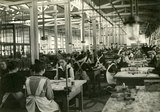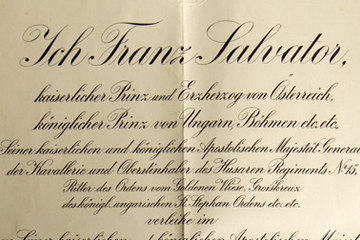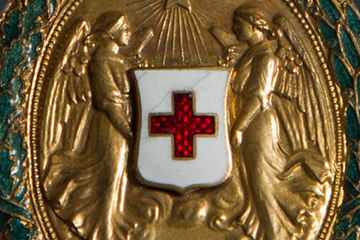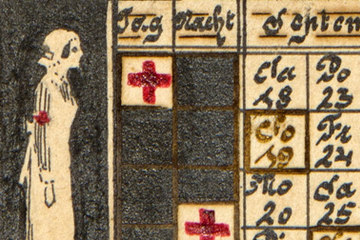As the war drew on, ever more men were called up to serve. Now it was up to women to compensate for the lack of available workforce and replace the men who were at war.
After the outbreak of the war, there was initially an increase in unemployment and an initial wave of layoffs that hit female domestic servants the hardest. Yet by the second year of the war, there was a labour shortage due to men’s military service. Women (in all of the countries at war) were therefore called upon to play an active role in the war economy and to enter traditionally male fields.
Many working women found work in the metal industry or took jobs in munitions factories. Female lamplighters, transport conductors, postal workers and carriage-drivers were a feature of urban life and became symbols of women’s employment.
The transition to the war economy led to a restructuring of the women’s employment market. While the textile industry, which had already been a traditionally female area before the war, collapsed, the metal industry was booming. The number of working women increased vastly, particularly in areas that were required for the war effort. By 1916, women made up half of the workforce in some Austrian engineering firms. In ammunition manufacturing, too, the number of female workers rose drastically.
The long hours, frequent nightshifts and often dangerous working conditions represented major challenges for the women. Just as in all other areas of women’s work, their wages remained far lower than men’s. Female tram conductors were no exception: their daily wage of 3.60 crowns was 30 heller less than that of their male colleagues.
The munitions and arms industry mostly employed women who had not previously worked, or who had come from other industries: farm labourers, servants who had been laid off, or former textile workers. Many middle-class women, on the other hand, sought secretarial or office-based posts.
When the war ended and the soldiers returned, many women who had been in industry had to leave their jobs. The number of working women returned to pre-war levels. The number of women in industrial jobs fell markedly, while employment levels for women with non-manual jobs remained broadly the same even after the war. The promotion of women in traditionally male jobs was, then, little more than a ‘guest act’ made necessary by the war.
Nonetheless, women’s employment in the war laid important foundations for attaining political equality and women’s suffrage. The war economy and the state valued women’s work very highly and viewed it as a vital contribution to a successful war effort. Women were no longer confined to the private sphere; many women who were working in munitions factories, as transport conductors or as war welfare volunteers gained public visibility. This new dynamism in women’s lives as a result of the war contributed to political equality for Austrian women, who were finally granted universal and equal suffrage in December 1918.
Translation: Aimee Linekar
Augeneder, Sigrid: Arbeiterinnen im Ersten Weltkrieg. Lebens- und Arbeitsbedingungen proletarischer Frauen in Österreich, Wien 1987
Bauer, Ingrid: Frauen im Krieg. Patriotismus, Hunger, Protest – weibliche Lebenszusammenhänge zwischen 1914 und 1918, in: Mazohl-Wallnig, Brigitte (Hg.): Die andere Geschichte 1. Eine Salzburger Frauengeschichte von der ersten Mädchenschule (1695) bis zum Frauenwahlrecht (1918), Salzburg 1995, 285-310
Daniel, Ute: Frauen, in: Hirschfeld, Gerhard/Krumeich, Gerd/Renz, Irina (Hrsg.): Enzyklopädie Erster Weltkrieg, Paderborn et al. 2009, 116-134
Heeresgeschichtliches Museum: Die Frau im Krieg. Katalog zur Ausstellung vom 6. Mai bis 26. Oktober 1986, Wien 1986













